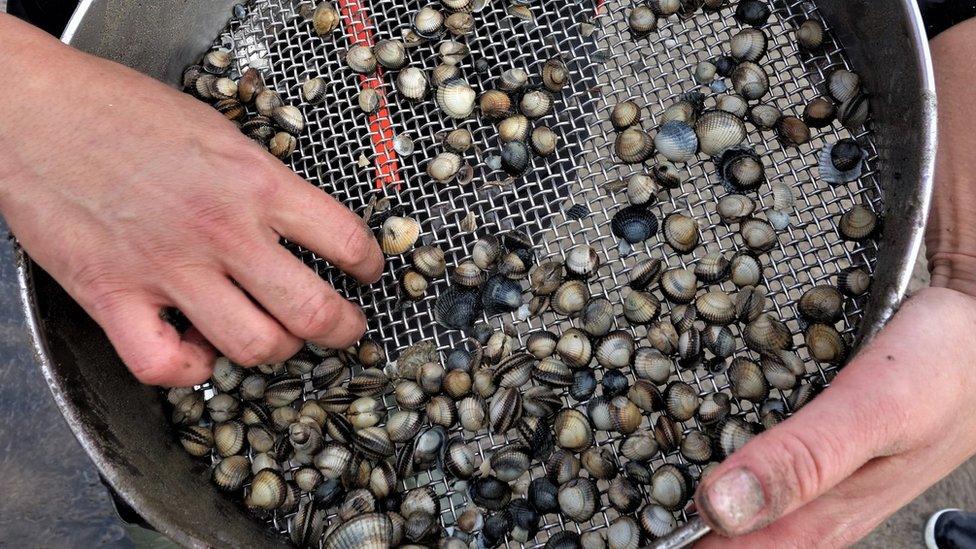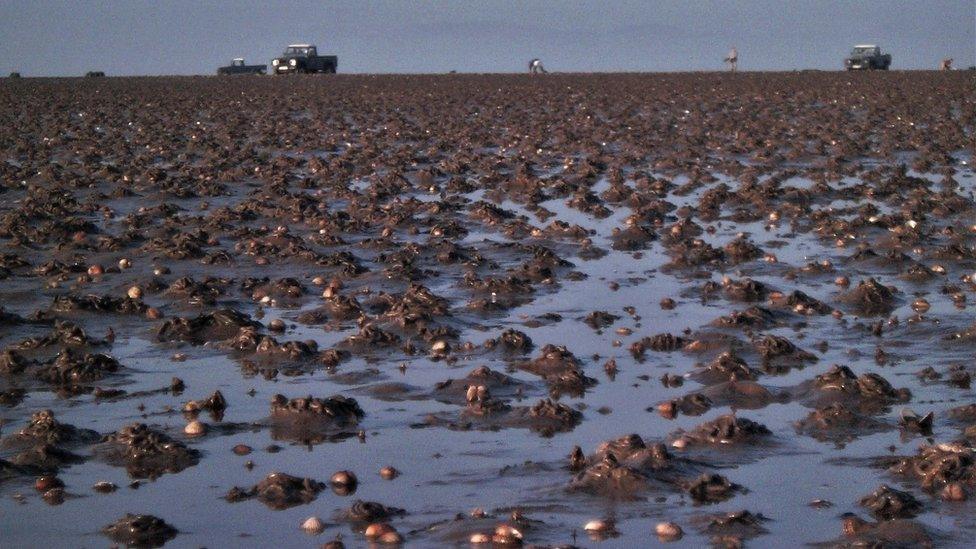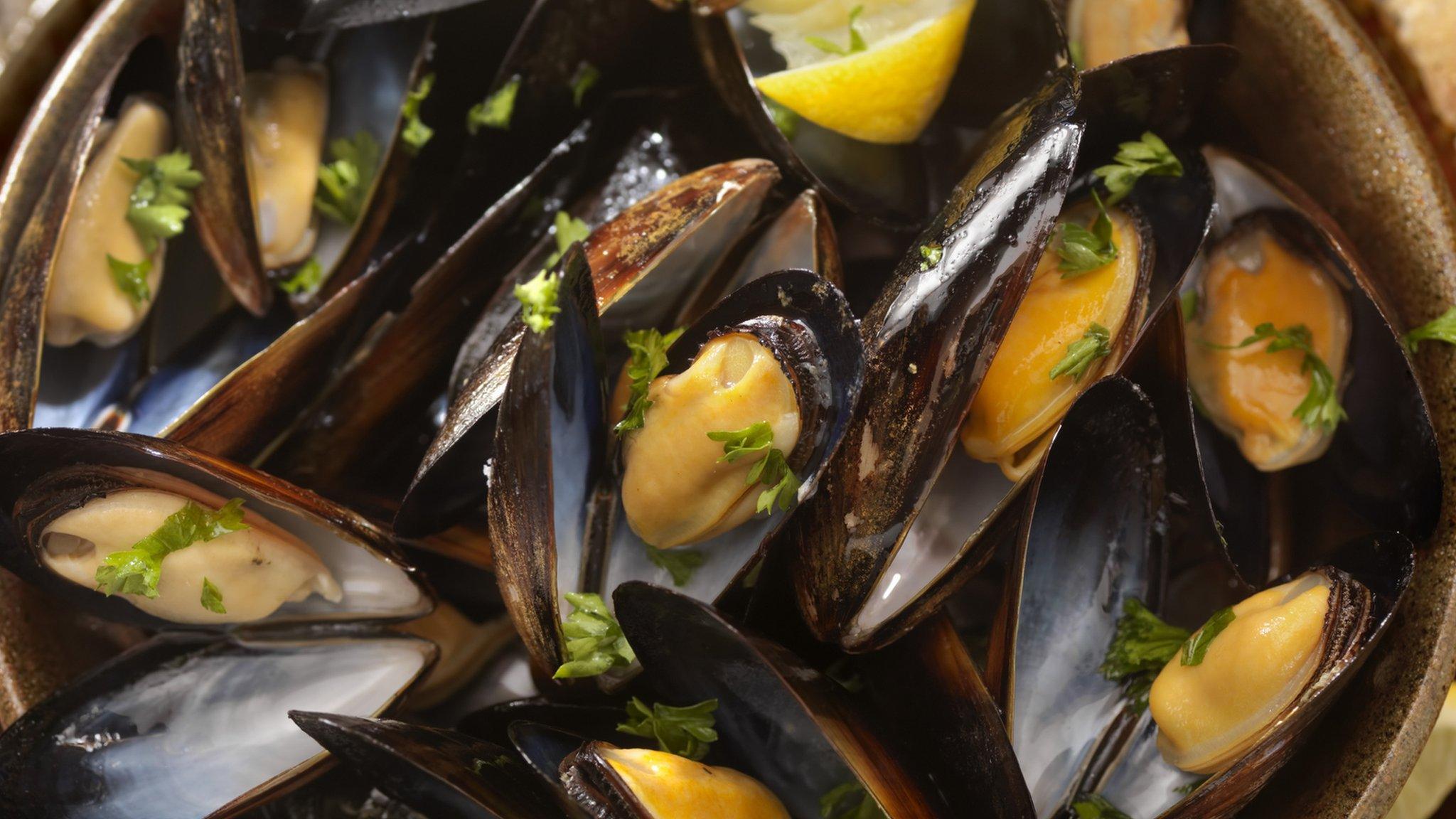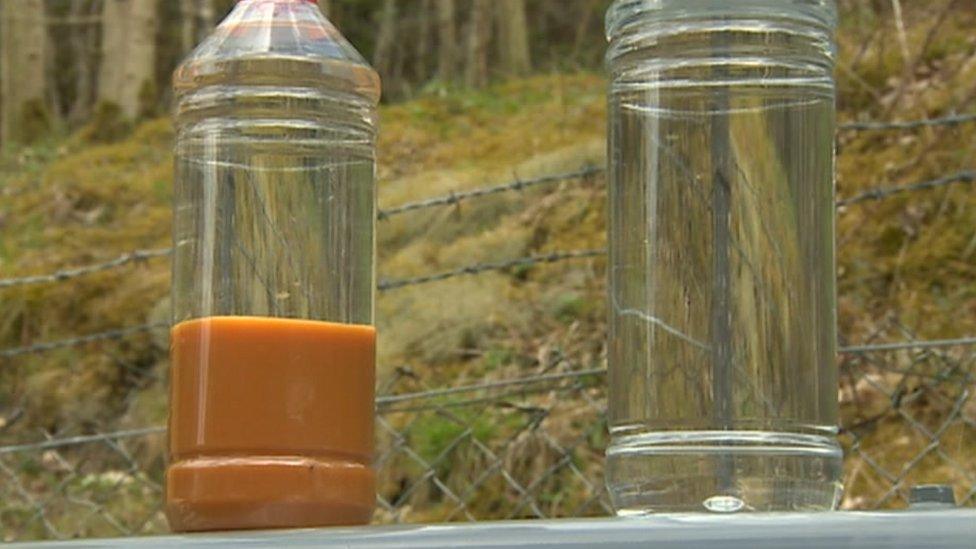Less sewage could mean smaller cockles, Swansea Uni study finds
- Published

Smaller cockles which do not live as long may be a result of higher water quality in Welsh waters
Better water quality has been linked to smaller cockles growing in Wales, new research has revealed.
Cockles have been harvested along the south Wales coast for centuries with the Burry Inlet and Loughor Estuary, near Swansea, being the main habitats.
The Swansea University study, which has looked at 50 years of data, also found a higher mortality rate.
Marine biologist Dr Ruth Callaway said the findings were "baffling".
Following her study, she argued the change was likely to be a natural adjustment and said she believed smaller cockles may be just the price we have to pay for cleaner water in Loughor.
Between 1958 and 2009 water quality around the south Wales coast has been massively improved and before 1997 wastewater effluent was discharged into the estuary from seven sewage plants.
This was modernised with two new plants using treatment processes that disinfected the effluent and removed the nitrogen.
This meant cleaner, healthier water for humans. Although the estuary is still subjected to sewage outlets, there seem to be fewer nutrients to sustain cockles.
"Studies of cockles across south Wales show they're amazingly adaptable to their surroundings," she said.
"We've found healthy cockles in the Bristol Channel's most polluted waterways, such as Port Talbot harbour.
"However in the Burry Inlet they've been smaller and less commercially viable, it's a question which has been baffling all of us."

Burry Inlet is one of the main habitats for cockles in south Wales
Untreated sewage releases nitrogen into the water, encouraging the growth of algae, on which cockles feed.
As the water has got cleaner, adult cockles have been unable to grow to their maximum size, though their numbers have increased.
"It's very easy to age cockles, they grow rings like trees," she added.
In the past dominant adult cockles could live for up to three or four years, however in cleaner water, they tend to die inside a year or two.
"Since the change in wastewater treatment there are more cockles, but maybe not in the size which people want to eat."
She discovered bigger, older, cockles, had been allowed to grow to a large size on the pollutants' nutrients.
But that meant in some years they were choking out the next generation.
"Cockle spawn measure less than 1mm, and have to swim for shore to grow in the sandbanks," Dr Callaway added.
"Adult cockles of over 1.5cm (0.6in) eat these spawn before they ever touch the ground, meaning adults control the next generation.
"A recent French study found that smaller young cockles have shorter lives, and we are seeing the same here in the Loughor Estuary."
Spencer Williams of Gower Coast Seafood said he had seen cockles shrink in size over the years.
"It did not just affect cockles, but in my experience mussels and lugworms also reduced in size," he said.
Dr Callaway added: "Maybe we have to change our appetites to reflect this reality."

WHAT'S KILLING OUR RIVERS?: Wyre Davies investigates what and who is to blame

Related topics
- Published13 January 2022

- Published2 February 2021

- Published2 May 2018

- Published20 June 2017
